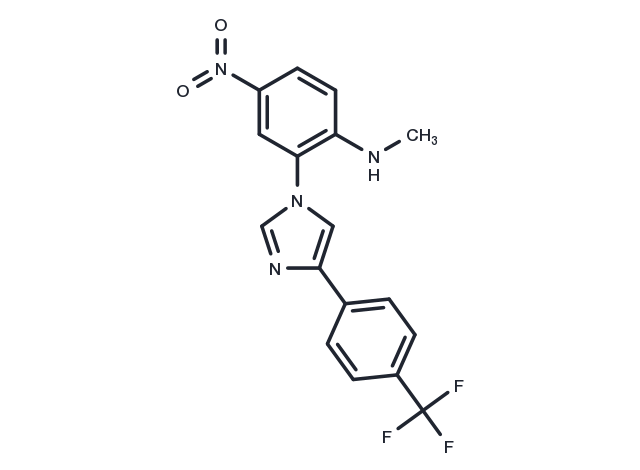Powder: -20°C for 3 years | In solvent: -80°C for 1 year


CU-T12-9 is a potent TLR1/2 agonist(EC50 of 52.9 nM in HEK-Blue hTLR2 SEAP assay). It acts by activating the NFkB pathway, upregulating proinflammatory cytokines, and enhancing TLR1 and TLR2 dimerization.CU-T12-9 activates both the innate and the adaptive immune systems. CU-T12-9 selectively activates the TLR1/2 heterodimer, not TLR2/6. CU-T12-9 signals through NF-κB and invokes an elevation of the downstream effectors TNF-α, IL-10, and iNOS.

| Pack Size | Availability | Price/USD | Quantity |
|---|---|---|---|
| 1 mg | In stock | $ 108.00 | |
| 2 mg | In stock | $ 153.00 | |
| 5 mg | In stock | $ 228.00 | |
| 10 mg | In stock | $ 297.00 | |
| 25 mg | In stock | $ 375.00 | |
| 50 mg | In stock | $ 455.00 | |
| 100 mg | In stock | $ 657.00 | |
| 500 mg | In stock | $ 1,360.00 | |
| 1 mL * 10 mM (in DMSO) | In stock | $ 198.00 |


| Description | CU-T12-9 is a potent TLR1/2 agonist(EC50 of 52.9 nM in HEK-Blue hTLR2 SEAP assay). It acts by activating the NFkB pathway, upregulating proinflammatory cytokines, and enhancing TLR1 and TLR2 dimerization.CU-T12-9 activates both the innate and the adaptive immune systems. CU-T12-9 selectively activates the TLR1/2 heterodimer, not TLR2/6. CU-T12-9 signals through NF-κB and invokes an elevation of the downstream effectors TNF-α, IL-10, and iNOS. |
| Targets&IC50 | TLR2:52.9 nM (EC50)(in HEK-Blue cells), TLR1:52.9 nM (EC50)(in HEK-Blue cells) |
| In vitro |
CU-T12-9 directly targets TLR1/2 to initiate downstream signaling.?CU-T12-9 specifically induces TLR1/2 activation, which can be blocked by either the anti-hTLR1 or the anti-hTLR2 antibody, but not the anti-hTLR6 antibody.?By binding to both TLR1 and TLR2, CU-T12-9 facilitates the TLR1/2 heterodimeric complex formation, which in turn activates the downstream signaling.?Fluorescence anisotropy assays revealed competitive binding to the TLR1/2 complex between CU-T12-9 and Pam3CSK4 with a half-maximal inhibitory concentration (IC50) of 54.4 nM.?CU-T12-9 signals through nuclear factor κB (NF-κB) and invokes an elevation of the downstream effectors tumor necrosis factor-α (TNF-α), interleukin-10 (IL-10), and inducible nitric oxide synthase (iNOS)[1].? |
| Molecular Weight | 362.31 |
| Formula | C17H13F3N4O2 |
| CAS No. | 1821387-73-8 |
Powder: -20°C for 3 years | In solvent: -80°C for 1 year
DMSO: 250 mg/mL (690.02 mM), Sonication is recommended.
You can also refer to dose conversion for different animals. More
bottom
Please see Inhibitor Handling Instructions for more frequently ask questions. Topics include: how to prepare stock solutions, how to store products, and cautions on cell-based assays & animal experiments, etc.
CU-T12-9 1821387-73-8 Immunology/Inflammation TLR obesity inflammatory carcinoma cancer Toll-like Receptor (TLR) TLR1/2 diseases specific infectious bladder CU-T-12-9 CUT129 Inhibitor breast asthma CU T12 9 inhibit influenza pancreatic inhibitor
